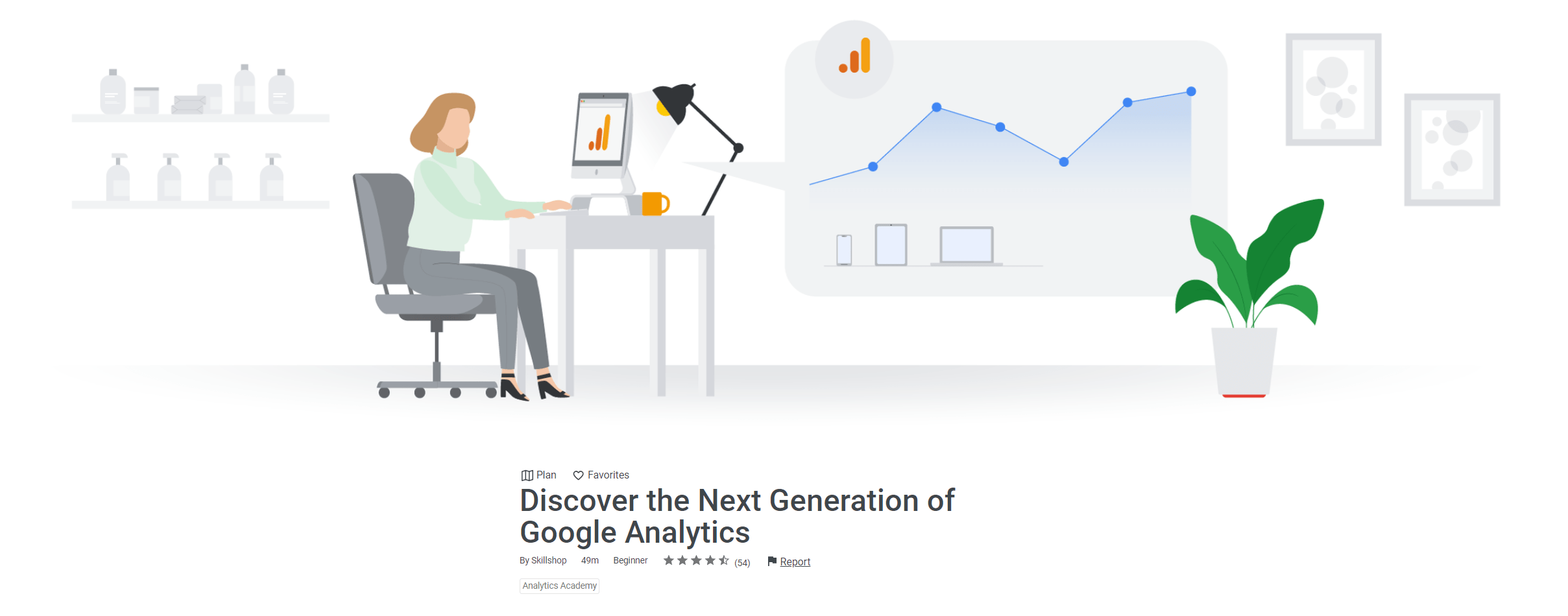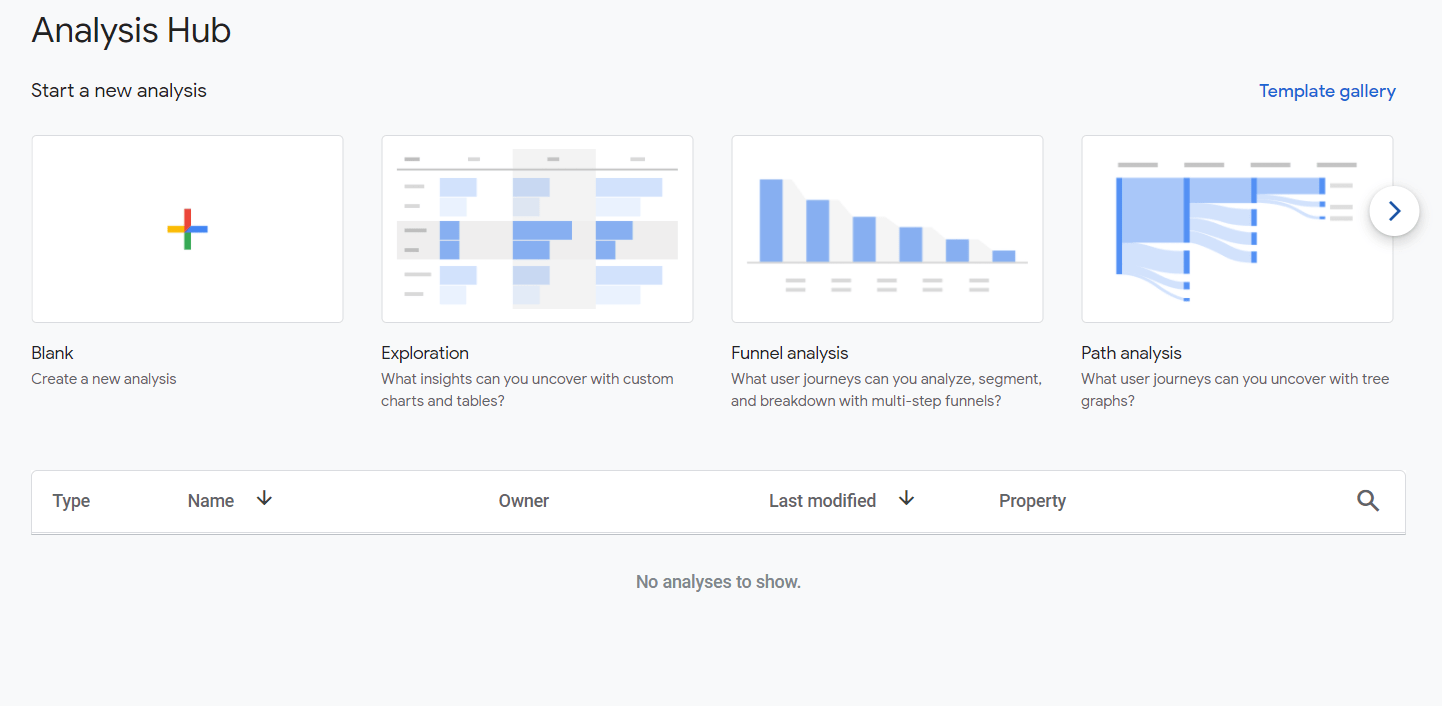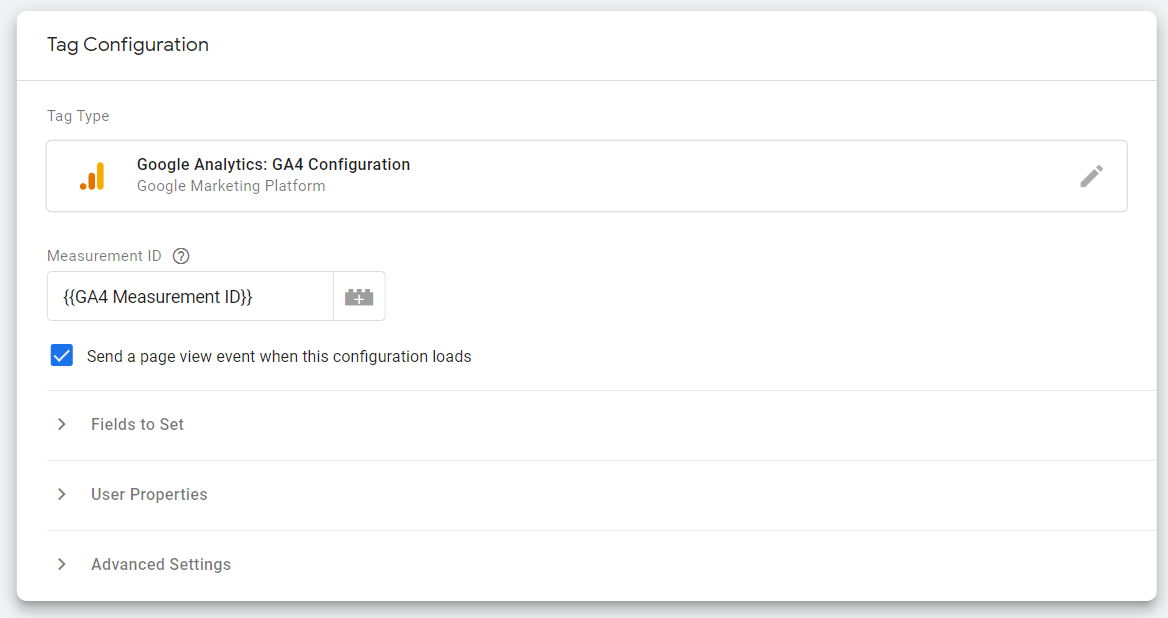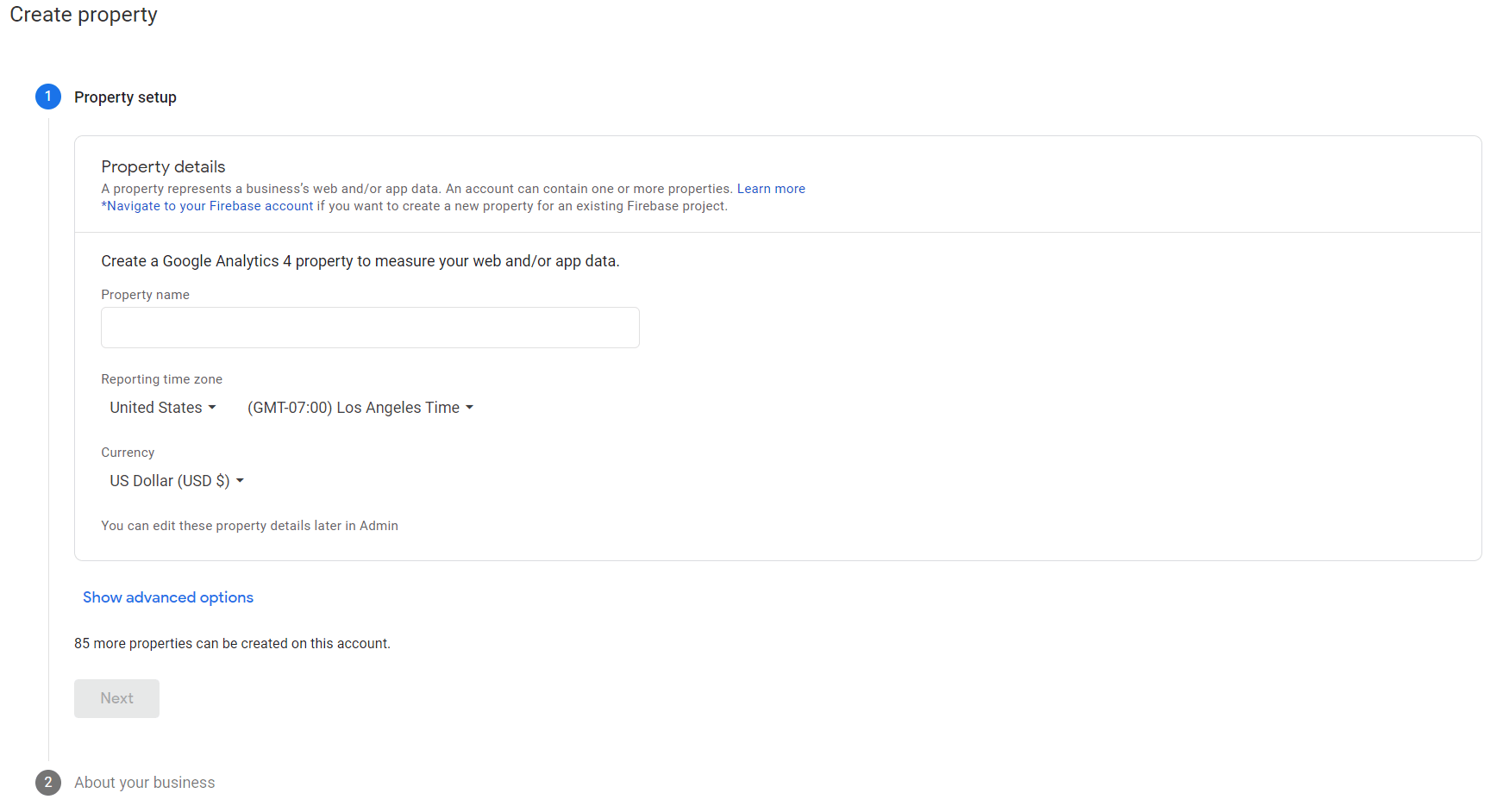Do you need to redo all of your Universal Analytics tags for the GA4 events, or can you import them?
Unfortunately, you can’t import them and you will need to redo them.
But I think it’s really important to bear in mind that many of the most common events are now implemented via Enhanced Measurement, so there’s no need to retag things like YouTube video playback or external link clicks.
That means that you only need to implement one tag, the GA4 Configuration tag, and then you can just focus on business-specific requirements, such as conversion tracking and mapping your custom dimensions across to the new parameter system.
You just need to think around the planning side and understanding what those requirements are upfront, so that you can tackle it in an efficient way. Remember: everything has changed, so you may need to think a little laterally in some cases.
Does Google have any learning resources and what’s changed?
Yes, they do. But I’ll be honest; it’s a work in progress, in my opinion.
The support pages/help pages for me are an absolute goldmine and they’re really well laid out. All of the GA4 specific content has [GA4] prefixed, so it’s really easy to find. It’s definitely worth having a read through that.
Beyond that, I would say go to their YouTube channel. I normally don’t like video content, personally I prefer to read things, but actually it’s probably the best source of information from Google right now.

There is also a smaller course over on Skillshop, that takes you through some of the core concepts but doesn’t perhaps give you the same depth of knowledge as the GA IQ.
My guess is that through the summer, and when we start getting the 360 tier teased and released, we’ll probably start to see a revamp of things like the GA IQ, but that hasn’t been touched as yet.
As an SEO, should I take action for GA4?
Yes. Set it up!
I’ll be honest, they don’t have the same integrations between GA4 and things like Search Console, for example, that we had in the Universal Analytics world – but all that really did was perform a join on two tables. It wasn’t particularly clever so, if you go set up that data collection today, there’s nothing stopping you once you’ve got your data into Big Query, for example, from doing a join in there.
Importantly as well when you start looking at trends of organic traffic into your landing pages, you want to have as much data history as possible. So, get up and running today so that you start building up that data history, and you can build on the set up as you go.
Can we migrate all of the types of tags into GA4 from Universal Analytics? The example here is Enhanced E-commerce.
This is a really good question and ‘technically’ is the answer.
There’s only one type of tag left now, it’s only the event tag. Every piece of data we send into GA4 will be sent as events. Anything standard, so page views as an example, are all covered by the configuration tag.
For Enhanced Ecommerce, most of the actions we have available in Universal Analytics are already available in Google Analytics 4 but the schema has had an overhaul. In my opinion, it’s much tidier now; gone is the action field and replaced with specific event names.
The biggest change to the schema is the products array; products are now items, and most of the product-specific parameters are prefixed with the term. For example, id becomes item_id, brand become item_brand, and so on.
Be sure to check out the GA4 developers guide for full details of the new data layer schema.
The most important thing to bear in mind here is that in GA4, the data layer schema is actually backwards compatible to the Enhanced E-commerce schema – but of course it’s not going to work the other way around.
So, for the time being, whilst you’re going to be running these alongside one another (and I do stress you want to run these alongside one another for a while!) then in terms of day-to-day management think about Universal Analytics first, and then do your GA4 revamp later on.
When GA4 becomes your primary data source, or if you’re starting a new site so aren’t dual running, then you want to develop for GA4 first, to benefit from the streamlined schema.
I’m migrating to a new site, should I wait until the new site is live before setting up GA4?
No, I wouldn’t wait, I would put them in alongside one another from day one. It depends how much effort it is, but for me, because it’s just one configuration tag for almost all of the core set up, getting the transactions in, plus the enhanced measurement, just get that in from day one. Then you can just set up an additional tag for each of the Enhanced E-commerce actions, and then just port across the data.
Definitely try to build it into the migration plan, because I think otherwise, if it’s out of scope from day one, it just gets harder and harder to start building that in and getting any development work that you need.
Will you be doing a session in the future take us to the new interface and what things in there mean?
Sure! We’ll be doing a lot more content on GA4 over the coming months. We’re really hyped about this and it’s a big focus for us. Do keep an eye on the blog and if you’re not on the newsletter, get signed up!
To be honest, the interface is really hard to use, to some degree. But it’s a paradigm shift more than anything else. In effect, the interface now is a collection of overview cards that tell you what kind of data you’re collecting, give you a feel for the values that you’ve got to play with.
It’s actually quite an easy way of exploring what values you’ve got before doing proper analysis. If you didn’t have access to admin rights, understanding what dimensions existed and exploring the values in there was actually quite difficult in Universal Analytics. Now it’s quite easy to go and see what parameters are being collected, what type of values are in each one, and what format they are in, which is very useful.
I should imagine what you really want to see more of is how to build reports. That’s really an Analysis Hub thing, and it’s likely we’ll do a session entirely on that at some point.

Can you add GA4 via Google Tag Manager (GTM)?
Yes, you can, and that’s exactly how I recommend doing it. All the usual reasons apply here; you can deploy tags quickly and with a greater degree of control than if you were hardcoding them.
If you already use GTM to deploy your Universal Analytics tags, this will speed up your deployment of GA4 as you’ll already have all of the data layer variables that you’ll need to deploy the new tags.

Tomorrow I’m going to create an analytics account for a new site, should I choose GA4 as well?
Yes, definitely do it. When you’re setting it up, you’ll notice that it immediately just says you’re creating a GA4 property; it doesn’t give you a choice. You have to go into the advanced settings to actually opt into a Universal Analytics property if you want one.
When you’re doing that, it gives you the option to either set them both up at the same time or do just Universal Analytics, and I would say we would never want to choose that third option unless we already have a GA4 property set up and we’re creating a new property for a very complex client who can’t retire Universal Analytics right now. If you’re starting from the ground up, it’s completely new, then you’re at least going to want both of them, if not just go all in on GA4.

Bear in mind that Universal Analytics is nearing the end of its life, your focus really should be on GA4 otherwise you risk a lot of wasted effort when UA is turned off.
You can learn more about GA4 in our in-depth guide or check out the webinar recording. If you still have questions or need a set of helping hands to get set up then get in touch!
